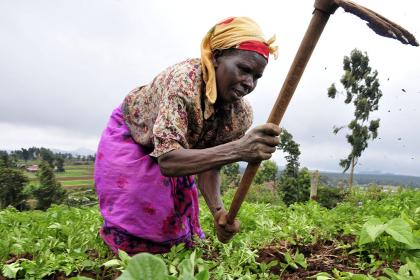
The Least Developed Countries, 2000 Report, deals with financing development in the 48 LDCs, and particularly with the scope for resource mobilization and the role of official development assistance (ODA), debt relief and private capital flows. It looks at economic growth and social trends in the LDCs in the 1990s. It assesses how economic reforms have worked in the LDCs, the value of the enhanced HIPC Initiative to them, and ways in which new approaches to partnership and policy coherence can increase aid effectiveness.
LDC 2000 has been prepared with a view to the Third United Nations Conference on the Least Developed Countries (UNLDC III), which will be held at Brussels in May 2001. UNLDC III will be an important forum in which the special problems of the least developed countries are brought into prominence in the hope that changes in international cooperation adequately address their development needs. This Report is intended as an input to those discussions. It aims to provide a better substantive basis for an approach to international development cooperation which will facilitate a progressive transition in which the LDCs build up productive capacities and international competitiveness, and rely increasingly on domestic resource mobilization and private capital inflows for their development finance needs.
The Report complements and builds on the Least Developed Countries Reports (LDCRs) of the last two years, which were concerned, respectively, with the place of LDCs in the multilateral trading system and the problem of market access (LDCR 1998), and with the need to develop productive capacities in the LDCs and national policies which could facilitate that process (LDCR 1999). This Report briefly reviews economic growth and social trends in the 1990s. But it focuses in particular on the question of financing development in the least developed countries. This is essential not simply for addressing the pressing social needs of these countries. It is vital for accelerated economic growth and the development of productive capacities, for successful structural adjustment and integration into the world economy, and for reduced vulnerability to external shocks and natural disasters.
In order to facilitate discussions at UNLDC III, the Report discusses the scale of the development finance challenge in LDCs, the scope for meeting this challenge through domestic resource mobilization, and the constraints which are limiting the LDCs´ access to international capital markets and attractiveness for FDI. From the analysis, two key features of the development financing patterns of LDCs emerge. First, the central accumulation and budgetary processes of the LDCs are dominated by external rather than domestically generated resources. Second, almost all the external finance for most LDCs comes from official sources. The development prospects of most LDCs thus still depend critically on aid relationships and associated external debt dynamics. The Report examines how these have been working in the 1990s and whether the current rethinking of international development cooperation is likely to rectify the deficiencies of the past.
The main analytical conclusion of the Report is that the current diagnosis for change which is shaping the new approach to international cooperation is flawed in several crucial respects.




